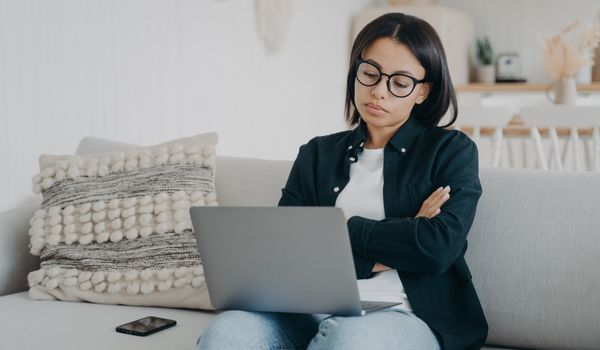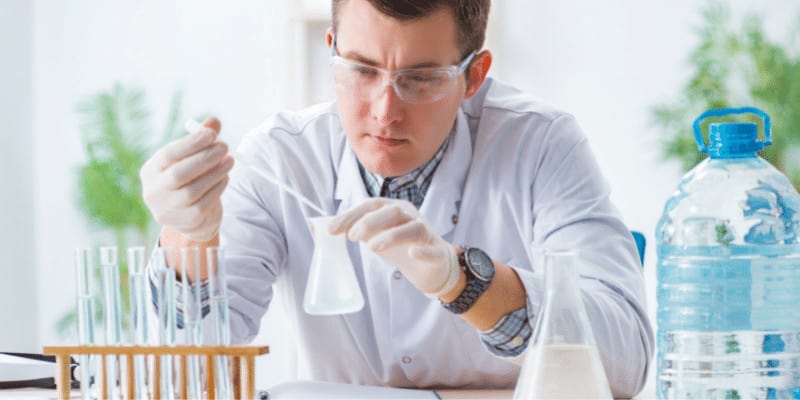Tap water looks clean—but what you can’t see might surprise you. From chemical byproducts to microscopic metals, even treated public water can carry dozens of contaminants.
The U.S. has some of the safest water in the world, but aging infrastructure and emerging pollutants like PFAS and microplastics have put that reputation to the test.
If clean, safe drinking water matters to you, it’s worth knowing what’s in your tap and how to deal with it. Let’s break down the most common contaminants and how to protect your home.
💡 Key Facts:
- The EPA considers anything in water that isn’t pure H₂O a contaminant—even substances that aren’t necessarily harmful.
- Public water systems are regulated, but standards vary based on health risk vs. taste or odor.
- Chlorine, lead, arsenic, PFAS, and microplastics are among the most common concerns.
- Many harmful contaminants have no taste, smell, or color.
- Private well water isn’t regulated—you’re responsible for testing it.
- Only a lab-based water test can show what’s actually in your tap.
- Home filtration options range from basic pitchers to full whole-house systems.
What Exactly Is a Water Contaminant?
The EPA defines a water contaminant as any substance—physical, chemical, biological, or radiological—that’s found in drinking water. That includes everything from naturally occurring minerals to dangerous pollutants.
Even harmless elements like calcium and magnesium fall under the term “contaminant.” Why? Because the broad definition helps the EPA assess risk, set limits, and regulate water quality more consistently.
The EPA and the Safe Drinking Water Act

The Environmental Protection Agency (EPA) sets the rules for what’s allowed in public drinking water under the Safe Drinking Water Act. These rules fall into two categories:
- Primary Standards: These are all about health and safety. They’re legally enforceable and limit over 90 harmful substances — things like lead, arsenic, and bacteria that no one wants in their glass.
- Secondary Standards: These cover what you see, smell, and taste — the stuff that doesn’t usually make you sick but might make you think twice about taking a sip. They’re not federally enforced, but many states follow them anyway.
The EPA also keeps tabs on emerging contaminants — newer substances like PFAS, microplastics, and pharmaceutical residues. They’re not officially regulated yet, but if enough evidence shows they’re a health risk, the EPA could step in with formal limits down the road.
MCLs vs. MCLGs — What’s the Difference?

The EPA sets two limits for contaminants in drinking water: Maximum Contaminant Levels (MCLs) and Maximum Contaminant Level Goals (MCLGs).
MCLs are legal limits. If water exceeds this number, utilities are required to take action. These levels are based on health risks, but also consider cost and treatment limitations.
MCLGs are ideal targets based only on health and safety. They aren’t enforceable, but they reflect the level at which no known health effects are expected — even for children or vulnerable groups.
So why aren’t they always the same? Updating old water systems takes time and funding. That’s why some legal limits (like lead at 15 ppb) are higher than the safe goal (zero).
Bottom line: Just because your water meets EPA standards doesn’t always mean it’s risk-free. If a contaminant is close to its limit, filtering it out could still be the smart move.
Is Well Water Regulated?
No — private wells aren’t covered by EPA regulations. If you’re on well water, it’s up to you to test and treat it.
The U.S. Geological Survey (USGS) studies groundwater across the U.S. and offers tools to help well owners understand what they might be dealing with.
Well water can be great, but it’s not a “set it and forget it” system. Professionals recommend testing at least once a year — especially for bacteria, nitrates, and total dissolved solids — to stay ahead of any problems.
💧 What’s Added to Tap Water?

Municipal water isn’t just filtered — it’s treated with chemical additives to keep it safe as it travels through pipes. Here’s what might be coming through your tap (on purpose):
🧪 Chlorine – Used to kill bacteria and viruses. It’s effective, but can give water a strong smell or taste. Some people also report skin or eye irritation.
🚰 Chloramine – A mix of chlorine and ammonia. It lasts longer in the water system but is harder to remove and may not be compatible with all filters.
🦷 Fluoride – Added to help prevent cavities. Most experts say it’s safe in small amounts, though some studies have raised concerns about overexposure, especially in young children.
🛡️ Corrosion Inhibitors – These coat old pipes (like lead pipes) to help prevent metal from getting into your drinking water. You won’t taste them, but they’re crucial in cities with aging infrastructure.
The 15 Most Common Tap Water Contaminants
| Contaminant | What It Is | Potential Risks |
|---|---|---|
| Chlorine | Disinfectant added to kill bacteria and viruses | Dry skin, eye irritation, potential cancer risk with long-term exposure |
| Chloramine | Chlorine + ammonia; longer-lasting disinfectant | Harder to remove; may cause skin irritation or worsen respiratory issues |
| Trihalomethanes (THMs) | Byproducts of chlorine reacting with organics | Liver and kidney damage, increased cancer risk |
| Arsenic | Naturally occurring metal found in groundwater | Cancer, cardiovascular disease, skin problems |
| Lead | From old pipes and plumbing systems | Developmental issues in children, reproductive problems |
| Sediment | Dirt, rust, and particles from pipes or wells | Cloudy water, clogs, may carry bacteria or metals |
| Fluoride | Added to help prevent tooth decay | Thyroid issues, possible neurodevelopmental effects with high exposure |
| Total Dissolved Solids (TDS) | Minerals, salts, metals dissolved in water | Taste issues, scale buildup, may indicate other contaminants |
| VOCs | Volatile organic compounds from industrial pollution | Liver, kidney, or nervous system damage |
| Tannins | Natural organics from decaying vegetation | Unpleasant taste and color, may carry other pollutants |
| Pesticides & Herbicides | Chemicals from agriculture and landscaping runoff | Hormone disruption, neurological effects, cancer |
| Perchlorate | Used in explosives and rocket fuel | Thyroid dysfunction |
| PFAS | “Forever chemicals” in nonstick and waterproof goods | Cancer, hormone disruption, immune system effects |
| Nitrate | From fertilizers and septic systems | “Blue baby syndrome,” especially dangerous for infants |
| Pharmaceuticals | Drug residue from waste and water systems | Unknown long-term effects, hormonal imbalance |
Of the hundreds of possible contaminants in drinking water, these are the fifteen most likely to be in yours.
🧪 How Do I Know if My Tap Water Is Contaminated?

You can’t always tell by looking. While some contaminants cause discoloration, odors, or odd flavors, the most harmful ones — like lead, PFAS, and nitrates — are completely invisible.
If your water smells like chlorine, tastes metallic, or leaves stains on fixtures, that’s a red flag. But even crystal-clear water can carry unseen risks.
The only way to know what’s really in your water is to test it.
🔬 Testing Your Tap Water Quality
City water is regularly analyzed and generally safe to drink, even if it’s not perfect. Ask your supplier for a copy of your annual consumer confidence report. Mandated by the EPA under the Safe Drinking Water Act, it lists contaminant levels in your local tap water supply.
Lead is the exception. Since contamination occurs after water leaves the treatment facility, and community surveillance is limited, independent testing is your best bet. Free tests are offered in some urban areas where lead is problematic. Other cities offer testing for a small fee.
If you drink from a well, having your water tested is up to you. The CDC suggests annual testing for:
- pH
- Nitrate
- Coliform bacteria
- Total dissolved solids
States and local health departments have additional recommendations based on local geology, your water source and the industrial and agricultural activity in your watershed.
Whether you’re worried about one contaminant or dozens, there’s a wide range of affordable home testing options. DIY test strips check for up to 20 contaminants for a few dollars. But we like SimpleLab’s Tap Score test kits because they’re comprehensive and foolproof for the first-time user.
Choose from single contaminant tests or affordable panels curated for city or well water. Just send them a sample of your tap water and within days, you’ll receive results and guidance on what to do next. SimpleLab partners with certified drinking water laboratories for the most accurate, actionable results.
See our recommended water test kits
Reducing Exposure to Tap Water Contaminants

The health effects of contaminated water are cumulative, so the less of it you drink, the better. To reduce your risk of exposure:
Buy Bottled Water
Drinking bottled water may seem like the obvious solution to dirty tap water, but it has pros and cons. It’s simple to reach for, but it’s expensive to buy, heavy to carry and a hassle to store.
Bottled water is an excellent short-term solution if a water test reveals worrisome results. But long-term, it’s bad for the environment and worse for your wallet.
Install a Water Filter
Home water filtration is an economical alternative to bottled water. From budget-friendly filter pitchers to whole-house water filters and softeners, there are options for every need and budget.
For as little as $200, an undersink reverse osmosis system tackles the toughest tap water toxins from chemicals to heavy metals without plastic waste and you can enjoy clean water right from the tap.
The Bottom Line
Americans’ tap water needs improvement. But until safe drinking water is a national priority, the best defense against contaminants is knowledge and the power that comes with it.
 120 people found this helpful. Was this guide helpful to you?
120 people found this helpful. Was this guide helpful to you? 

